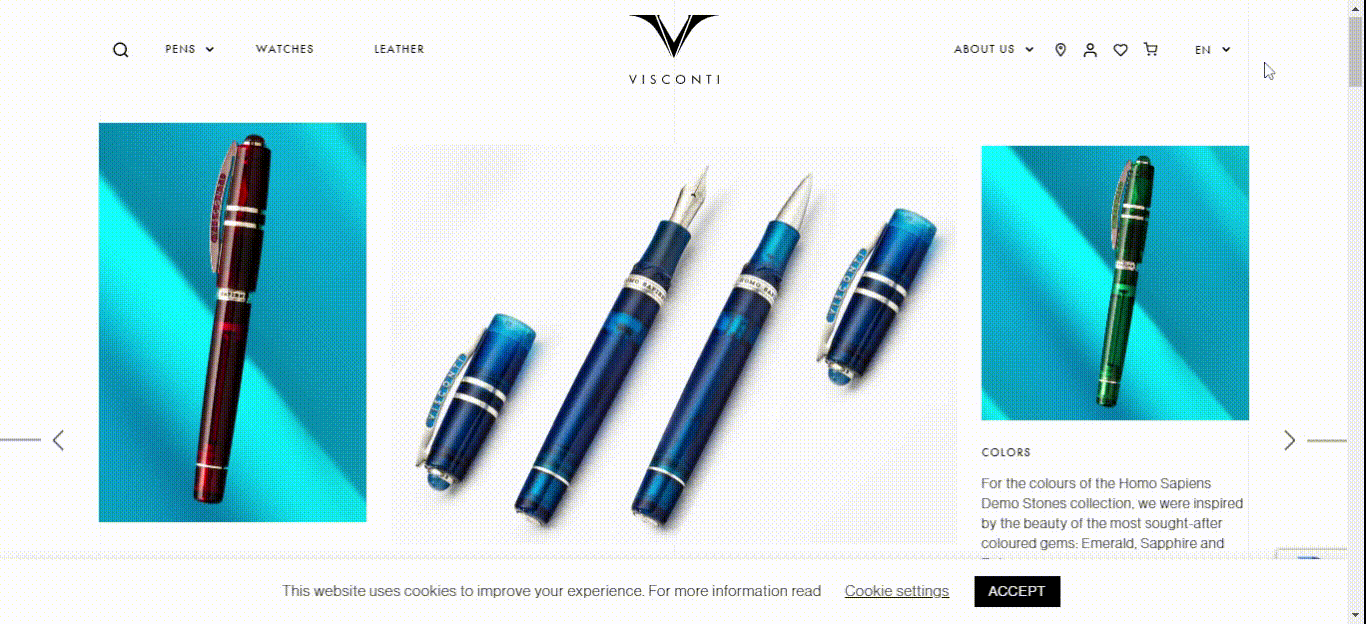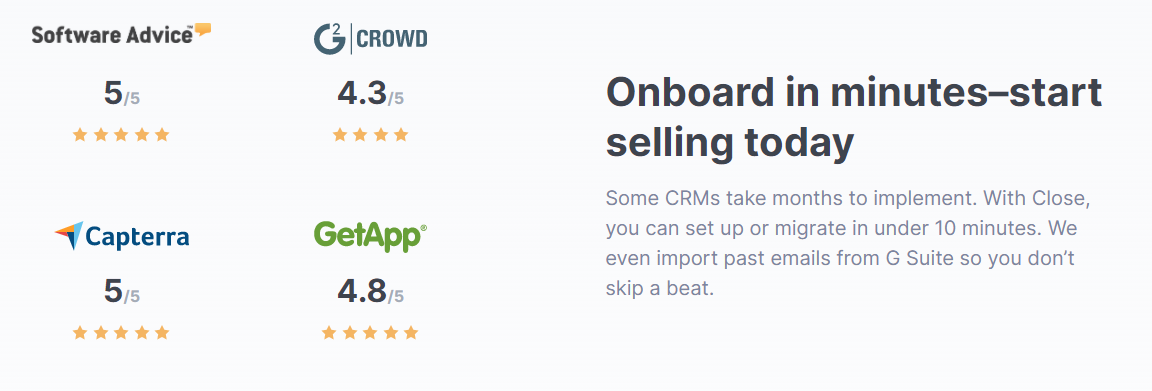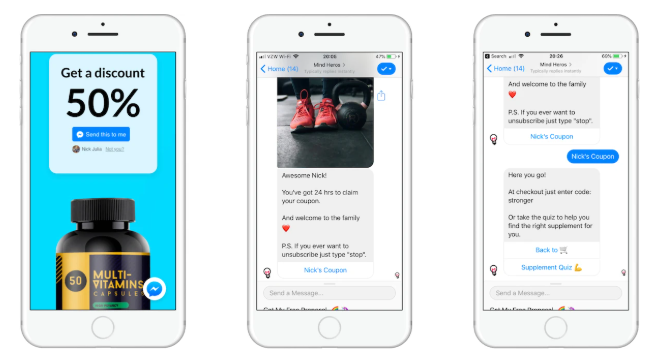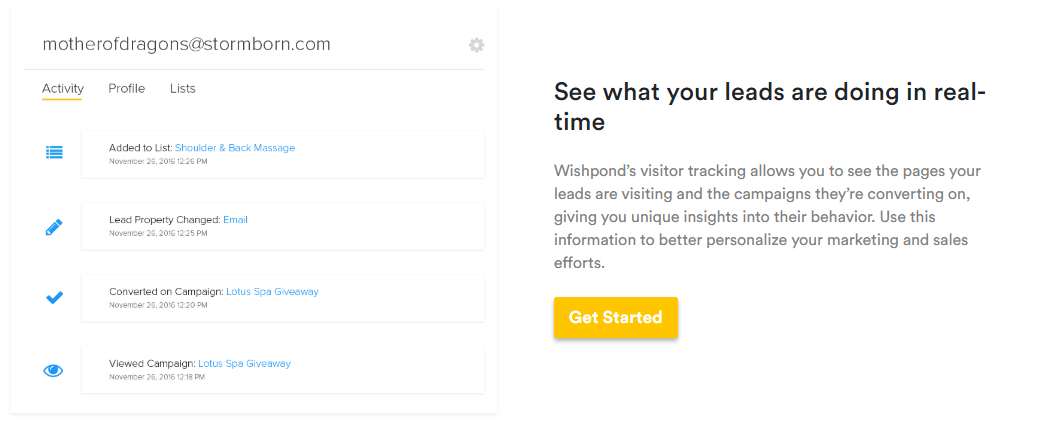The eCommerce industry is growing 23% year-over-year, yet 46% of American small businesses still don’t have a website. But as the eCommerce industry grows so does the competition to be seen by your potential customers.
Having an B2B eCommerce website is not excepted from this competition.
This means you’ll have to work hard at getting the attention of your B2B customers. With new tools, tech and services it can be hard to stand out in the crowd.
If you’ve noticed your website traffic dying down, sales seem to be stagnant, and then it’s time for you to start using these ten tips to help increase eCommerce sales if you’re selling to brands and businesses.
1. Be Specific About Your Ideal Client
Before we even dive into the tools and features aspect of this article, let’s talk about one B2B eCommerce marketing tip that seems to be easily overlooked. Ensure that you’ve specifically defined your buyer persona.
Whether you’re launching a new product or ready to get more customers for the one that you already have, being painfully specific about who your marketing to can be the difference between making those sales or falling flat.
A buyer persona is a detailed description of someone who represents your target audience. This is not a real customer, but a fictional person who embodies your best potential customers’ characteristics.
When you’re recreating your buyer persona, it’s also helpful to write down their specific pain points that they’re facing that your product can solve. There are so many problems in the world, but only a few brands know how to market themselves as the solution.
2. Walk Through the Simplicity of Your Product or Service
Unlike a B2C eCommerce store that’s product features and benefits can be very straight forward, a B2B eCommerce tends to over-complicate their value proposition and product.
When you’re working on your B2B eCommerce you have to ensure that you give your website visitor a clear understanding of:
*Who you are and why should they care
*What you provide and what problem does it solve
*How they can get started or learn more about you
Again this may seem like a no-brainer, but because of the need to be professional, use industry jargon, and appeal to corporate or business clients, you can lose your website visitor along the way. Instead, use the same principles that B2C does for the layout and product explanation, making it as simple as possible.
It’s your job to ensure that anyone can understand the value of being on your eCommerce store. Whether it’s an expert or a beginner in your industry, they should understand your B2B eCommerce website’s purpose and product.
For example, Shopify is an online platform for businesses. They clearly state who this product is for and what this product can provide in the simplest form. From the get-go, you can have a solid understanding of what problem this B2B site is providing for its customers.

3 Tips for better Simplicity of Your Product or Service
*Limite the Jargon: Don’t bombard website visitors with too much technical jargon and terminologies that are used widely in your industry. Sometimes your most valuable customer might not know what exactly they need help with, so keep things simple to help them decide.
*Avoid Clutter: Avoid adding too much copy, colors, or images to your B2B eCommerce website. Use navigation and color psychology to help ease your website user to scroll further or learn more rather than being distracted by the wrong features or CTA’s.
*Explain and Help: Focus more on using features or copy that helps rather than sells to the website user. People don’t like to be sold to, instead of showing them how you can improve their lives and increase sales for their business by solving a problem.
3. Make Onsite Search & Navigation Easy
Small Biz Trends found that 94% of consumers say your website must be easy to navigate. An easy to navigate eCommerce store helps to lower your risk of site abandonment. Not to mention Google rewards sites that have longer dwelling time than others.
Dwell time is the length of time a person spends looking at a webpage after they’ve clicked a link on a SERP page, but before clicking back to the SERP results. Your dwelling time is not your bounce rate, but two work hand in hand to show Google that your website is providing value to users.
Next to online navigation is an online search. When customers are shopping on eCommerce stores, you should make product search easy and accessible.
This could mean adding a filter, search tags with related keywords, or category sections that they can choose from when they land on your site. Never take your drop-down navigation for granted.

4. Offer Flexible Pricing Options
Offering flexible pricing options can help to increase sales for your B2B eCommerce store. When customers look for products and tools from a fellow B2B, they don’t want to be tied down to major expenses, especially if they’re new to your brand.
You want to start with a solid eCommerce Pricing Strategy.
An eCommerce pricing strategy is a set of rules or methods you should use to price your products.

You want to ensure that you’re not solely focused on being the cheapest but rather competitive pricing in the marketing based on who you’re targeting; this can result in using:
- Subscription-based payment
- Yearly contract payments
- Pay as you go feature
- Payment tiers (basic, pro, etc)
- Pay based on how many or how big your company is
5. Make Booking a Demo or Sample Easy
If you own a service-based eCommerce store that relies on booking demos, make your demo process easy and seamless to increase your eCommerce conversion rates.
This goes past just making your “Book a Demo” CTA bright and bold to see. It’s also about how easy the process is to book the demo.
I know as a marketer. You want to get as much information from your leads as possible. More than 67% of site visitors will abandon your form forever if they encounter any complications. If your forms are asking for far too much, then you’ll risk getting low demo conversions. Instead, wait until the customer sign’s up with you to pay to ask for that those extra details.
Only 40% of marketers claim to use multi-step forms, and 17% that do claim they are the reason for their satisfaction when it comes to lead generation. Quicksprout found that Limiting the number of form fields to 3 can slash form abandonment rates.

The next best thing to limiting your forms is to A/B test them. Like everything in marketing, testing is key. With Wishpond, you can create landing pages and interactive forms to get the job done.
Build your forms without any coding. Drag and drop fields and customize them with simple controls. Easily create custom fields to collect the information you want.
6. Join Product & Customer Review Site’s
Reviews can either grow your business or block your next sale. Like any industry B2C or B2B, the reviews associated with your eCommerce store is critical to getting business to trust you.
Around About 95% of customers read reviews before making a purchase, and 72% of customers won’t take any buying actions until they’ve read reviews.
Think about it. If a business manager uses your products or tools and is willing to leave a review, his review will most likely sway other managers to buy from your B2B eCommerce store far more than any ads you promote.
After all, that’s why nearly 70% of consumers will look to online product reviews before making a buying decision. B2B eCommerce stores like Close show off their good reviews and awards to build credibility and trust with brands.

The first step is to take the time to address your current reviews online, and this includes reviews on your social media platform or mentions. You can never really pinpoint where your potential B2B customers will find you.
Take hold of the feedback and use it to improve your business. If you see more negative reviews than positive ones, this could be why most people aren’t referring to your brand for its solutions.
After you’ve taken notes, reached out to past customers, and made the necessary changes, then it’s time to start building good customer rapport and showing off your best awards and reviews.
7. Up Your On-Site Customer Service Game
Once you’ve fixed your negative reviews and started to highlight your positive reviews, keep it that way with the help of excellent customer service.
As a B2B eCommerce company, your B2B customers will rely on you to keep their business running. They want to be able to reach out to you when problems arise and get a timely response. Most B2B brands use their initial customer service interaction to gauge whether this company will provide reliable support.
Around 70% of consumers say they have already decided to support a company that delivers great customer service and makes sense. For example, a B2B eCommerce store could have one of the best printers in the world, but if they have a terrible email or chat response time to potential customer questions, what’s to say you won’t receive the same treatment after you make a purchase. This can be a roadblock to your potential B2B sales.

Wonderflow found that customer-centric companies are 60% more profitable than companies that aren’t. Invest in chatbots that can provide automated responses to simple queries and customer service apps like Zendesk to ensure that each email or request is answered in a timely fashion. Provide a hotline that clients can call for urgent concerns.
For more help, here are 5 Expert Ways to Increase Your eCommerce Customer Service.
8. Get More Leads With Lead Magnets
Creating a lead magnet or a freebie to collect emails or essential information to remarket to potential customers, aka leads, is a great way to increase your eCommerce sales.
A lead magnet is the bait you offer to your leads in order to get them to convert on your form and become a lead. The key to collecting quality leads is to create a freebie or lead magnet that appeals to your ideal B2B customer.
For example, if your B2B eCommerce store sells products, then maybe a discount or exclusive deal can help drive leads. Likewise, if you’re service-based, you can provide a report, checklist, ebook, or an informative webinar on a topic that helps to address one of the pain points your potential customers need a solution for at the moment.
Regardless of which B2B eCommerce store you are in, you’ll need to create a valuable landing page or website pop-ups to present your lead magnet professionally and seamlessly in front of your B2B eCommerce.
9. Leverage the Power of Search Engine Optimization (SEO)
Search engine optimization stats suggest that 39% of global e-commerce traffic comes from search. Simply having a website has never been enough to help your business grow. Instead, it would be best if you made an effort to invest in SEO.
SEO drives awareness to your brand and allows your B2B community to find you easily. With 1.17 billion unique searches every month, you want to be at the top of the list when people search for topics or keywords related to your business once they click that search button Google.

SEO has evolved to be as simple as using a hashtag to as advanced as ranking for high-level keywords to rank on the first page of Google. SEO can come in various forms on your eCommerce store. The best place to start is with an SEO strategy to build your website structure to meet your SEO goals.
SEO is a bigger topic than most people let on, here are some detailed SEO guides to point you in the right direction.
* 11 Best Ecommerce SEO Tools Marketers Need to Start Using
* [The Ultimate Guide to SEO in 2019 Infographic
*SEO vs. SMO: What’s the Difference, and Why Should You Care?
10. Form Long-Lasting Partnerships with Complimenting Brands
Creating long partnerships with complimenting brands to help increase your marketing efforts and increase customers. Rather than treating each other as competitors, you can create complementary partnerships to either:
Build a new, joint product or service together
Cross-promote their products or services
Create a marketing promotion or campaign
Shared advertising and media buys
When you are looking for brands to partner with a brand they should have the same audience, and their culture and mission should match your brand. Great brand partnerships work because both parties complement each other and bring something to the table.
For example, Wishpond partners regularly with a brand like Mention to help generate leads together, promote products, and build community. For more on co-promotion and partnership, check out 21 Examples of Successful Co-Branding Partnerships (And Why They’re So Effective)

The Rundown
Growing your eCommerce store is a journey that never ends. As we grow in the digital space, there will be newer and better ways to drive more traffic and increase sales.
The good news is that these top 10 tips to double your eCommerce sales as a B2B company are timeless. Here’s a quick recap so you can start checking them off your to-do list:
Be Specific About Your Ideal Client
Walk Through the Simplicity of Your Product or Service
Make Onsite Search & Navigation Easy
Offer Flexible Pricing Options
Make Booking a Demo or Sample Easy
Join Product & Customer Review Site’s
Up On-Site Customer Service Game
Get More Leads With Lead Magnets
Leverage the Power of Search Engine Optimization (SEO)
Form Long-Lasting Partnerships with Complimenting Brands
At Wishpond, we don’t just help companies get leads, but we help them get more qualified leads. Ready to get started with your all-in-one marketing tool to boost traffic, increase conversions, and revenue?




